Patrick MacQueen of Hancock, New Hampshire, got a great package deal on an aged 12′ aluminum skiff, Evinrude outboard, and trailer. He counted his $500 as well spent: “Aluminum boats are rugged and have great utility,” he wrote, “but they sure can be ugly.” The interior was painted gray with black and white flecks, and the exterior was chalky with oxidation. Decals, cracked and peeling, identified the outboard skiff as a MirroCraft.
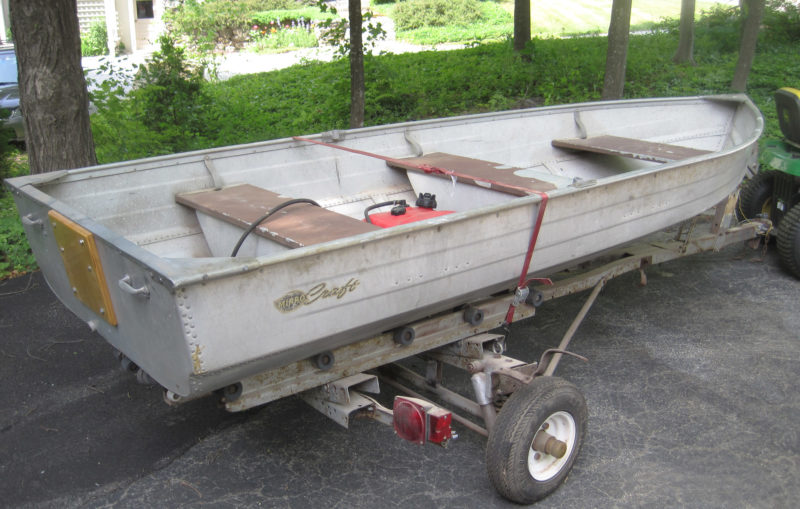 Patrick MacQueen photographs
Patrick MacQueen photographsThe old aluminum boat wasn’t much to look at but still had plenty of life left in it.
The Mirro Aluminum Company got its start in Manitowoc, Wisconsin, making kitchen cookware—aluminum pots and pans—and in 1956, confident that their experience making stove-top vessels that could keep water in, decided to manufacture boats that could keep water out.
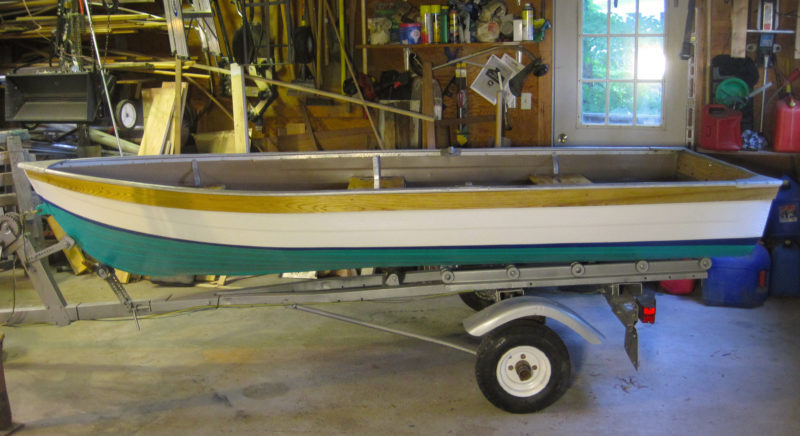
The first steps in the transformation of the MirroCraft were a paint job and the addition of a faux sheer strake in ash.
Patrick, approaching retirement and seeing boatbuilding would fill the leisure hours he’d have ahead of him, thought the skiff would be a good winter project and decided to do much more than put a new finish on the still serviceable hull. He pulled out the factory-installed aluminum seats. They were covered in mahogany-brown vinyl, and as unpleasant to sit on as they were to look at. They’d be replaced with warm, bright-finished cedar thwarts. After giving the boat a three-tone paint job, Patrick add faux sheerstrakes of varnished ash. The skiff’s flat sheerline made it possible to get the nearly straight planks out in one piece from long ash boards.
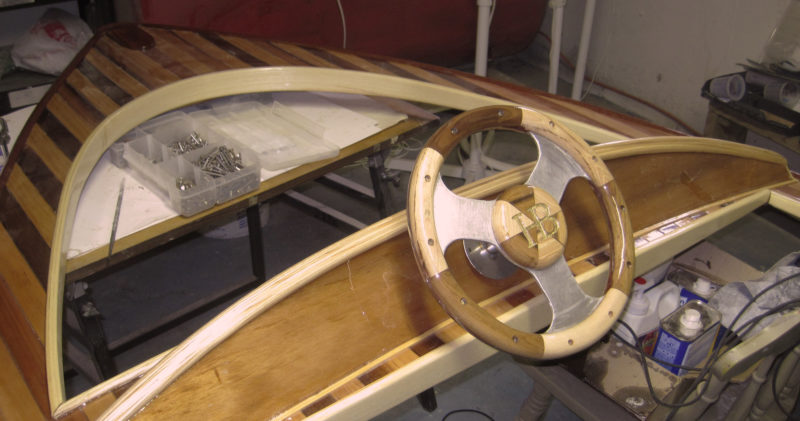
The core of the wheel is aluminum salvaged from the original seats after they were removed.
Earlier in the boat’s life, it’s likely that the skipper sat in the stern, steering the with outboard’s tiller, and with all that weight aft, the bow would have been well out of the water. Patrick decided to improve the trim by moving the helm forward so he could pilot the boat from the center thwart. He decked the boat, creating two cockpits separated by the dashboard. The deck’s 3/16″ plywood substrate was gussied up with strips of cedar, an ash coaming, and a mahogany rail.
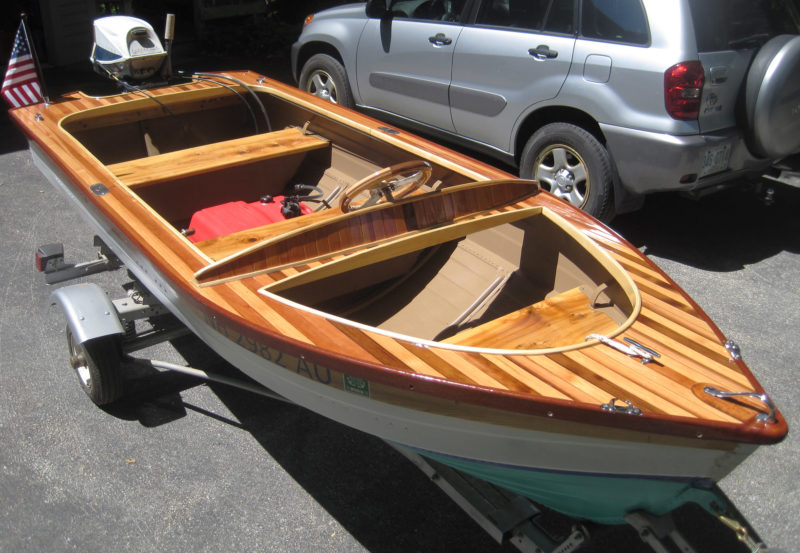
Cedar decks, trimmed in ash and mahogany, completed the transformation.
The original thwarts that Patrick removed didn’t go to waste. He used the aluminum for the wheel and trimmed it with maple and walnut. More bits of the aluminum were pressed into service as the thwart-mounted throttle and shifter.
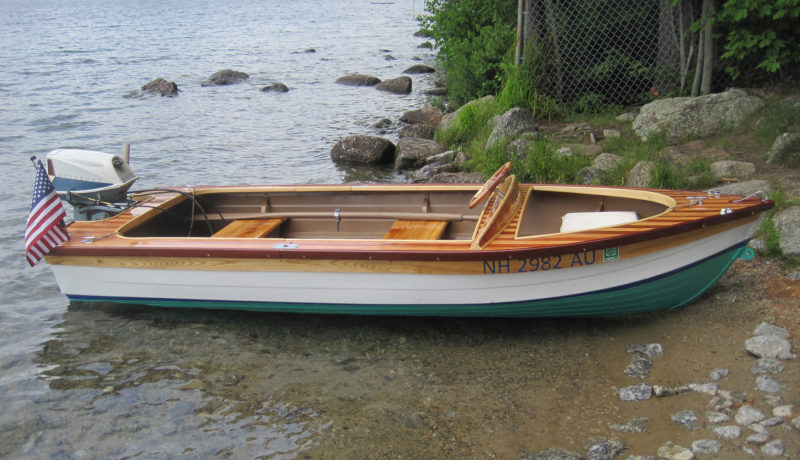
BUTTERFLY, all dressed up, now gets admiring looks, which had never come her way in her previous life.
The name BUTTERFLY graces the transom, appropriately, and the transformed skiff has been on just about every lake within a 30-mile radius of Patrick’s home. That’s a lot of lakes, and a lot of people have seen and admired the boat, never guessing that its ancestors were pots and pans.![]()
Have you recently launched a boat? Please email us. We’d like to hear about it and share your story with other Small Boats Monthly readers.
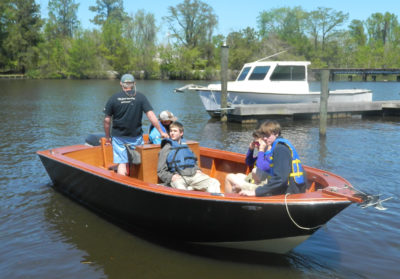


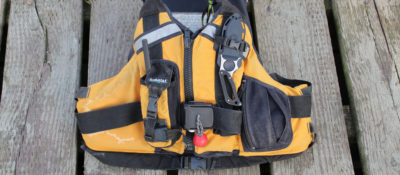


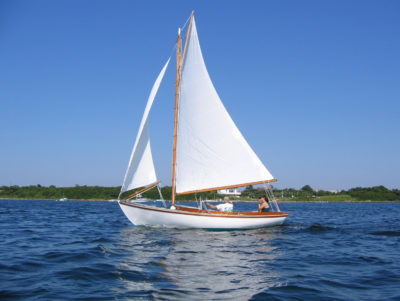



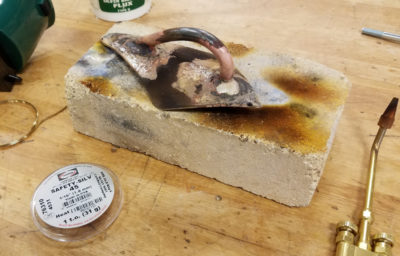
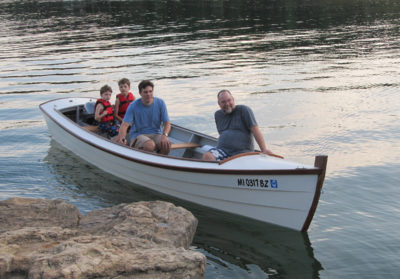
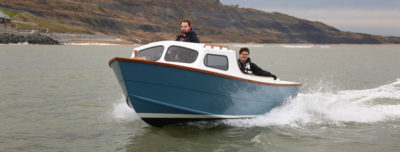
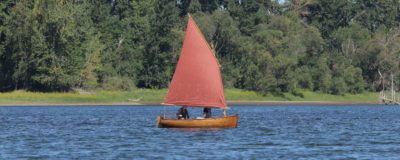
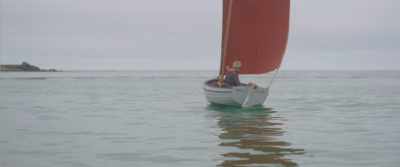
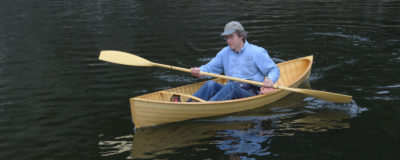
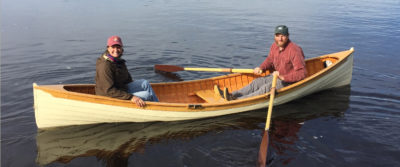
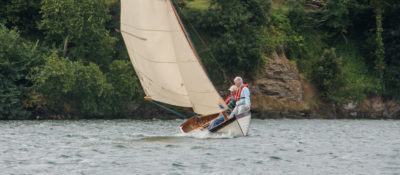


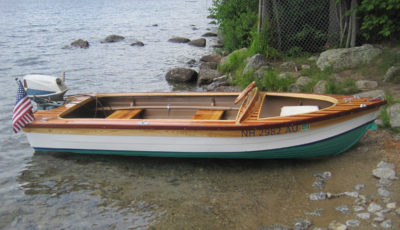
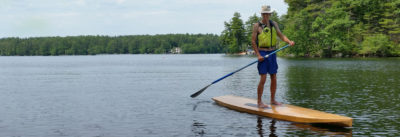
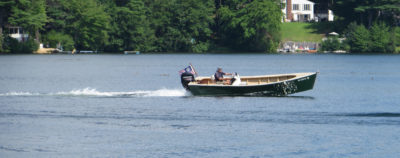
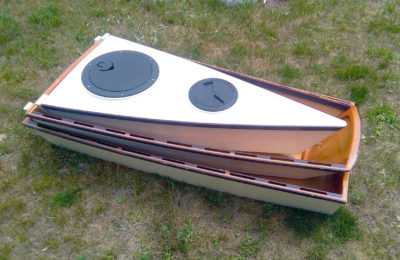

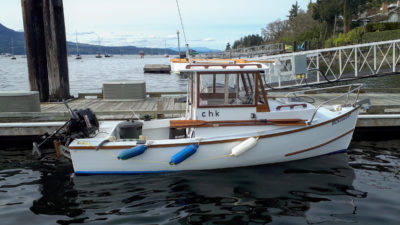

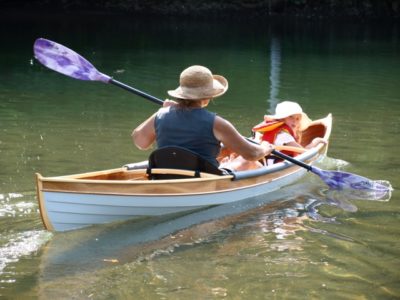
I loved the article on making your own bronze blocks. I had wanted to do something like that but never got as creative as the authors. Next time…
Regards,
Pat
Skipper says she’s beautiful! Great vision.
Cheers,
Skipper and Kent
Great idea and execution!
A couple of questions:
What is the total thickness of the wood deck—3/16″ ply plus the cedar/ash strips?
Does the deck support weight of someone sitting or standing on it?
How did you attach the deck to the hull?
Thanks,
Hans
Hans, being a Luddite and not particularly good at internet stuff, I am very embarrassed to say that I never realized that questions were being asked on the website. Believe it or not, a friend just pointed this out to me. Anyway, the wood deck would be a total of 3/8″ thick: 3/16″ ply and 3/16″ cedar strips. The cedar I bought from the local lumber yard had a lot of dark and light pieces so I just alternated them as much as possible. The deck seems pretty rugged and easily supports people sitting on it. I always end up climbing over it to get into the boat. I am reasonably certain it would handle someone standing on it although I admit I have never actually done that as I believe the 12′ boat is so light that it might capsize if someone were to actually do that. Again, very embarrassed about the reply over a year late.
The deck is two separate pieces (half front and half back) built outside of the hull. It is all epoxy glued together including the mahogany rub-rail which is then attached to the aluminum hull with stainless screws. The ash sheer strakes are also attached to the hull with stainless screws and the rub-rails come down over them.
Hi Pat,
Thanks for your reply on the BUTTERFLY project; looks like great execution. I’d still like to know a little bit more about the process. Is there any fiberglass included on your wood deck? Or is it just varnished? Exactly how did you attach the deck – screwed through the top, or from underneath? Glued? Did you remove any aluminum during the build?
Many thanks,
Gary – on the Puget Sound
Extraordinary job.
I am impressed with the creativity and craftsmanship of this project. I have a 12′ Starcraft aluminum boat (1968?) which the previous owned fixed up. It is calling me to follow your lead and do something similar. Thanks for the inspiration and for doing a first-class job.